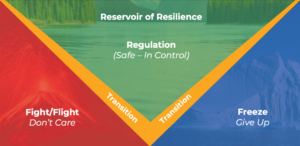
Emotional stability isn’t built in perfect conditions—it’s tested and strengthened during life’s rockiest moments. I once heard a story about a father and son hiking together. The son was young, full of energy, and eager to prove himself on the trail. But as they climbed higher, the path turned treacherous. Loose rocks shifted underfoot, and the son began to hesitate, his confidence shaken.
Seeing his son’s fear, the father knelt beside him and said, “Don’t look at the whole trail—just focus on your next step. One step at a time, and you’ll get there.” With his father’s steady encouragement, the son kept moving forward, one careful step at a time, until they reached the summit.
That story stuck with me because it mirrors what happens in life. When the ground feels unstable, it’s not about having all the answers—it’s about focusing on the next step and trusting the process.
Recognizing Emotional Triggers
Emotional missteps often happen when we’re unprepared for triggers—those moments that destabilize us. Like hiking on loose rocks, we might slip into fear, frustration, or overwhelm without even realizing what set us off. The key is learning to recognize those triggers and having strategies in place to regain our footing.

Common Emotional Triggers and Counter-Strategies:
- Feeling Overwhelmed: When tasks pile up or challenges seem insurmountable.
- Counter-Strategy: Break the task into smaller, manageable steps and celebrate progress along the way.
- Fear of Failure: When the fear of making mistakes paralyzes action.
- Counter-Strategy: Focus on learning instead of perfection. Remind yourself that growth comes through effort, not flawlessness.
- Loss of Control: When unexpected changes create uncertainty.
- Counter-Strategy: Focus on what you can control—your attitude, preparation, and responses—rather than what you can’t.
Activity: Map Your Triggers and Solutions
- Identify Triggers: List three emotional triggers that cause you to feel off balance.
- Plan Counter-Strategies: Write down specific strategies you can use to re-center yourself in those moments.
- Test and Adjust: Track when these triggers arise and how effective your strategies are. Adjust as needed.
Book Recommendation for Further Growth
- “Emotional Agility” by Susan David – Explores how to navigate emotions effectively, build resilience, and make values-based decisions. David emphasizes that emotional flexibility, not rigidity, helps us adapt to life’s challenges.

Final Thoughts
That story of the father and son reminds us that stability doesn’t come from avoiding tough terrain—it comes from learning how to move through it. Emotional stability works the same way. It’s not about eliminating difficulties; it’s about equipping ourselves with tools and strategies to handle them.
What rocky ground are you navigating right now? Take time to map your triggers and create strategies that help you find solid footing.
Now It’s Your Turn:
Complete the activity above and see how identifying triggers and planning responses can help you stay grounded when life feels uncertain.


